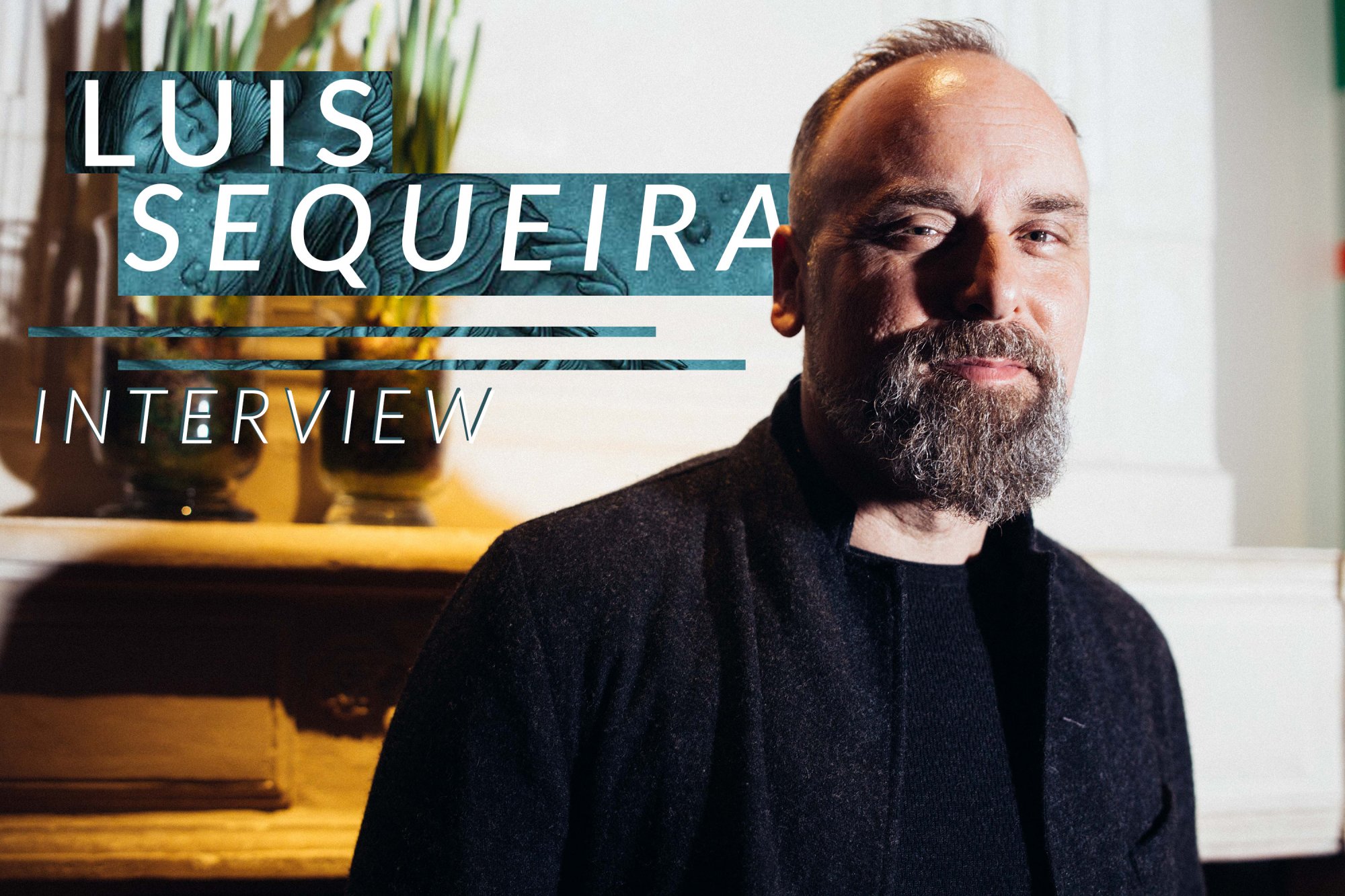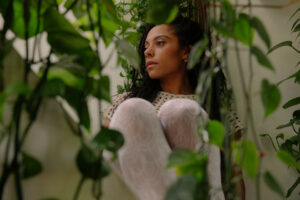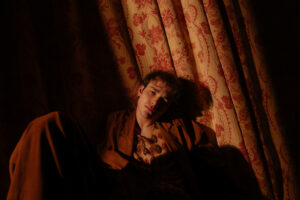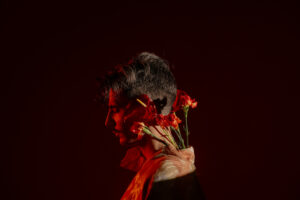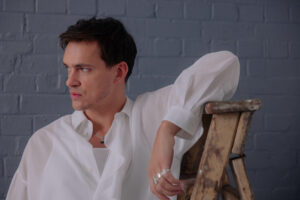To meet Luis Sequeira was a real pleasure and, we can definitely say, an honor. Not only because he is an artistic person and a talented and passionate costume designer but also (and mostly) because he is the nicest and easiest to talk to person, and a sweet soul.
We met him at the Soho Hotel in London, the night before the BAFTA Awards and we spent a long time chatting about his inspirations, his work, and his journey through the world of cinema. Nominated at the Bafta and also at the Oscars (still pending) for Best Costume Design for “The Shape of Water,” on February 19, 2018, he won Best Costume Design for a Period Film at the Costume Designers Guild Awards. His fondness and admiration for the director Guillermo del Toro are loud and clear. With “The Shape of Water” Luis managed to create a world of perfection, of dancing colors and perfect personalities, which can be seen through that coat, those shoes or, simply, through a teeny tiny detail, like a small hole in a jacket. We may not even notice it, but it’s that tiny detail that, in the end, makes the difference. This movie speaks of love. And Luis also told us how much love was put on making the film happen.
Enjoy our interview with this incredible soul and discover with him all the secrets about the making of the costumes of “The Shape of Water”.

I watch “The Sound Of Music” every year, and I hope “The Shape of Water” becomes something like that when people see it all the time.
___________________
How did you feel the moment you discovered you had been nominated at the Baftas and Oscars for “The Shape of Water”? Where were you? And what was your first thought?
___________________
So for the Baftas, I was working on set nights so I went to bed and I knew that they were going to be sometime in the morning but I was like “I’m gonna go to bed” and then I had my phone beside me and I had it on vibrate and all of a sudden it was ‘brrrr’ and it just kept on vibrating and I took a look and saw that I was nominated. For the Oscars, everyone was saying ‘you are gonna get nominated, you are gonna be nominated’. So the night before I said ‘ok, keep calm, you might not be nominated‘ so I decided not to watch because it’s too much pressure and then at 8.30, I woke up and I was looking at the time and I thought ‘ok, maybe I turn it on’ and again it started going and I knew I had been nominated. So, I was ecstatic and I was kind of floating. I don’t know how I got to the kitchen, I don’t know how I got dressed that day, it was all kind of surreal.
___________________
How much have the work and career of your mother influenced your own career?
___________________
I think hugely, my mom had an atelier in Lisbon, and as a child I looked at her portfolio. She never understood why I got into fashion, she wanted me to be a lawyer or an accountant, something where you are gonna get a steady paycheck, but, obviously, it was in my blood. For instance we had sequins beads in little tubes and I decided I didn’t like them all blue or all red and I wanted to mix them all up and she was like “mannaggia la miseria (oh c’mon) what are you doing?”; I made a big mess of the beads. And then I would cut the skirts to make clothes for my G.I. Joe doll. So, it’s been kind of infused in my life.

___________________
From “Carrie” to “Mean Girls,” and now “The Shape of Water.” Is there a genre you like the most or you let yourself be inspired by the single character?
___________________
I like all genres. For me, every project brings something different, even a horror has things that you will learn: artistic and technical. Toronto has a history of doing good horror movies, so a lot of said movies go there. But even “Carrie”, for instance, I had to redesign the “Carrie’s dress,” and for me, it was a big weight on my shoulders to do a good job, ‘how am I gonna design something that’s gonna stand the time now and still be part of the original?’ So you find a challenge in whatever work you do.
For me, I love period dramas, I love creating a world and I like to do future because I think it’s when you have to put theory and possibility and create a world that has not yet happened.
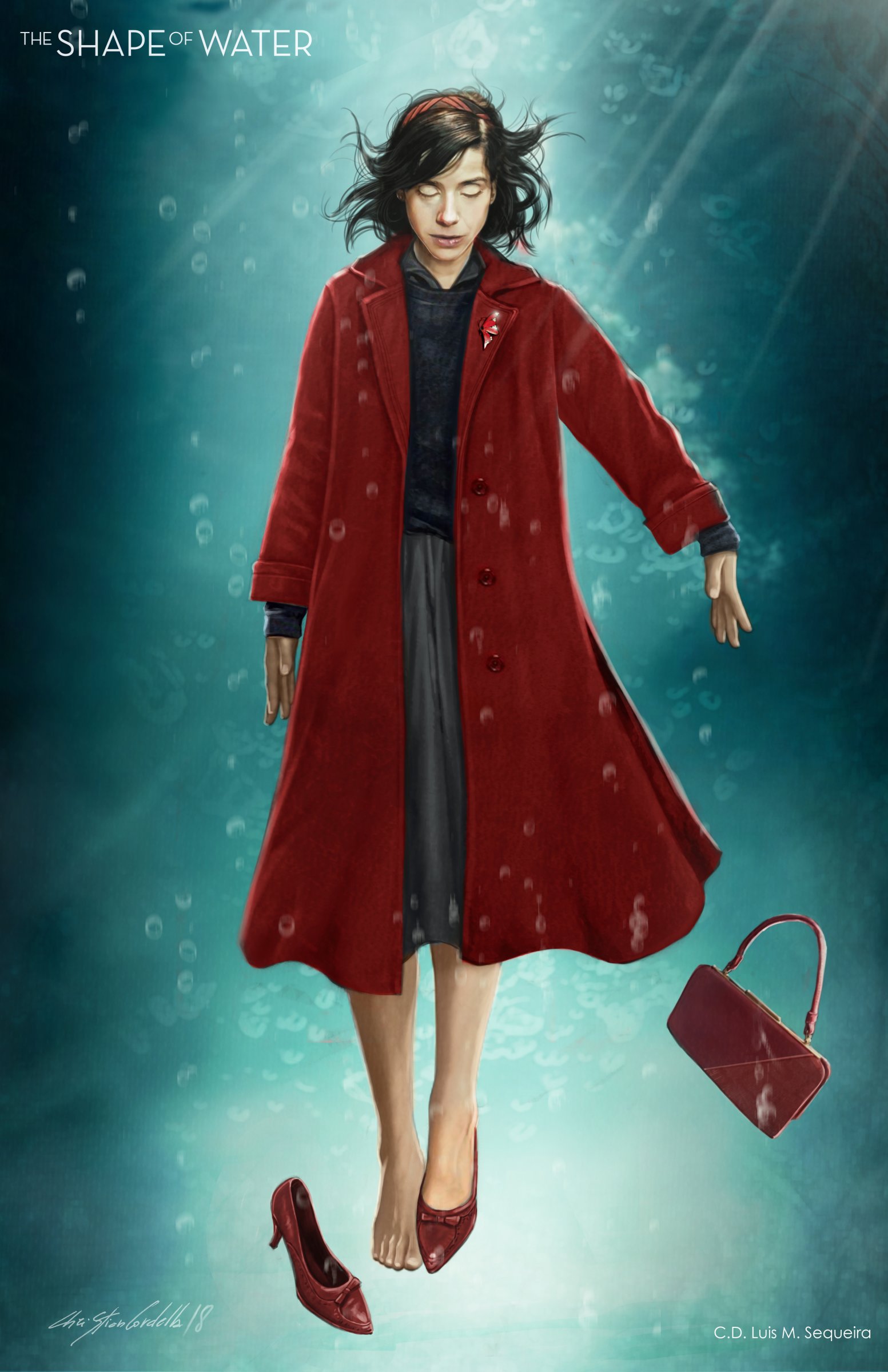
___________________
For “The Shape of Water,” how did you develop the study of the color palette?
___________________
The movie was supposed to be black and white originally, so I did a study on how cloth changes from color to black and white. I was very interested and I thought ‘this is going to be very cool.’ But then it changed to colors so all the production designers met with Guillermo and he created a palette, and then I met with Guillermo and created a palette where I started with 100% saturation, and then 80% saturation and then 60% saturation and 50% just to see where we wanted to be; not only visually as we see it, but also in the film.
Sometimes when the film has been dial down, you have to pump up the color, otherwise, everything is very flat. So Paul D. Austerberry (production designer) had his colors, and I had my colors, and then we had a meeting and we figured it out.
The movie is divided into different color palettes. Every location has its kind of palette and even the characters change their palettes as they go. Evolution and environment. So it’s kind of 3 different things happening at the same time.
___________________
Being the Cold War period, from where did your research for the costumes start? Did you take some other movies as a reference?
___________________
The research started with photos: photojournalism, fashion, catalogs, personal photo collections. I even got photos from my mom, from my mom’s family and some other crew members had some photos and we created 4 big binders of photo reference, scientists and lab workers and janitor workers just to have an overall feel. And then from that, I drew specific images for most of the main characters. There were some movies that Guillermo liked the look of. I like to see movies of the period, usually not fantasy movies, but usually very normal movies of the period.
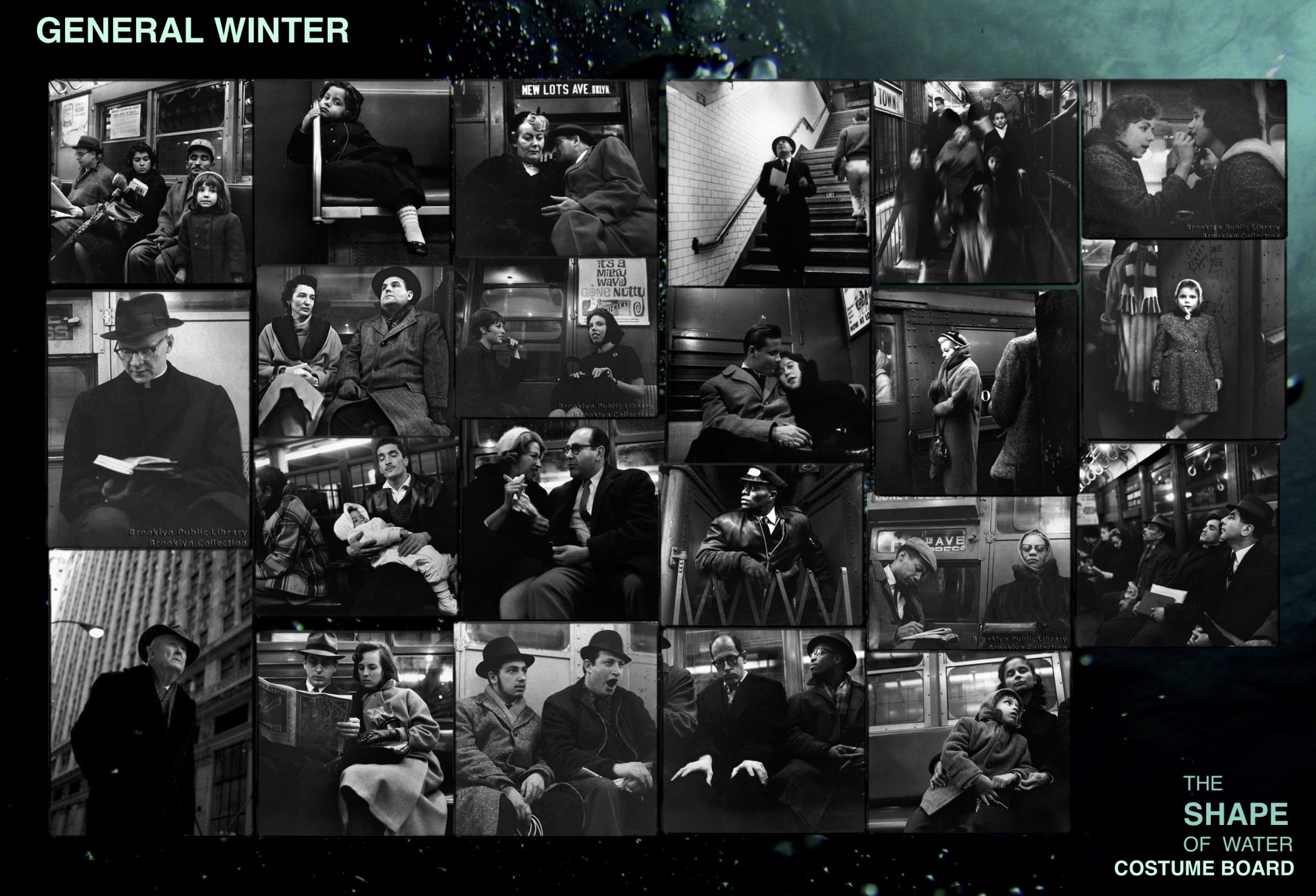
___________________
How much do you think a character can be built by the way s\he dresses?
___________________
I think it’s paramount for sure, I think the actor feels the character when s\he puts the clothes on. When we start to work in creating that character, a lot of the actors turn back to me and say ‘we are really finding the character’ or I’m very excited about where we are going.’ And understanding that clothes shouldn’t wear the person, the person needs to wear the clothes. So we were building a lot of these clothes, we made them from scratch.
_
I think the actor feels the character when s\he puts the clothes on.
_

___________________
Can you tell us about the study for the costume design of Elisa, what was her evolution in the movie? An what about Strickland and Giles?
___________________
She starts off as someone who’s very in the shadow, her silhouette is different from other women of the movie, because she watches these old movies, I wanted her to have this kind of period feel. She didn’t make a lot of money; so I thought she would be buying also old clothes from like the early thrift store world. And then she had a uniform at work and she kind of had a uniform in her life, hence it had a very simple silhouette, a very simple shape, very simple clothing pieces, little Peter Pan collars. Then later on in the movie, as she finds some strength we introduced the red, which represents her love for the monster, her courage, her conviction. At the beginning of the movie you see that she sees the red shoes and it’s a little something in her mind, but later from that, she goes into the red coat and the red hairband.
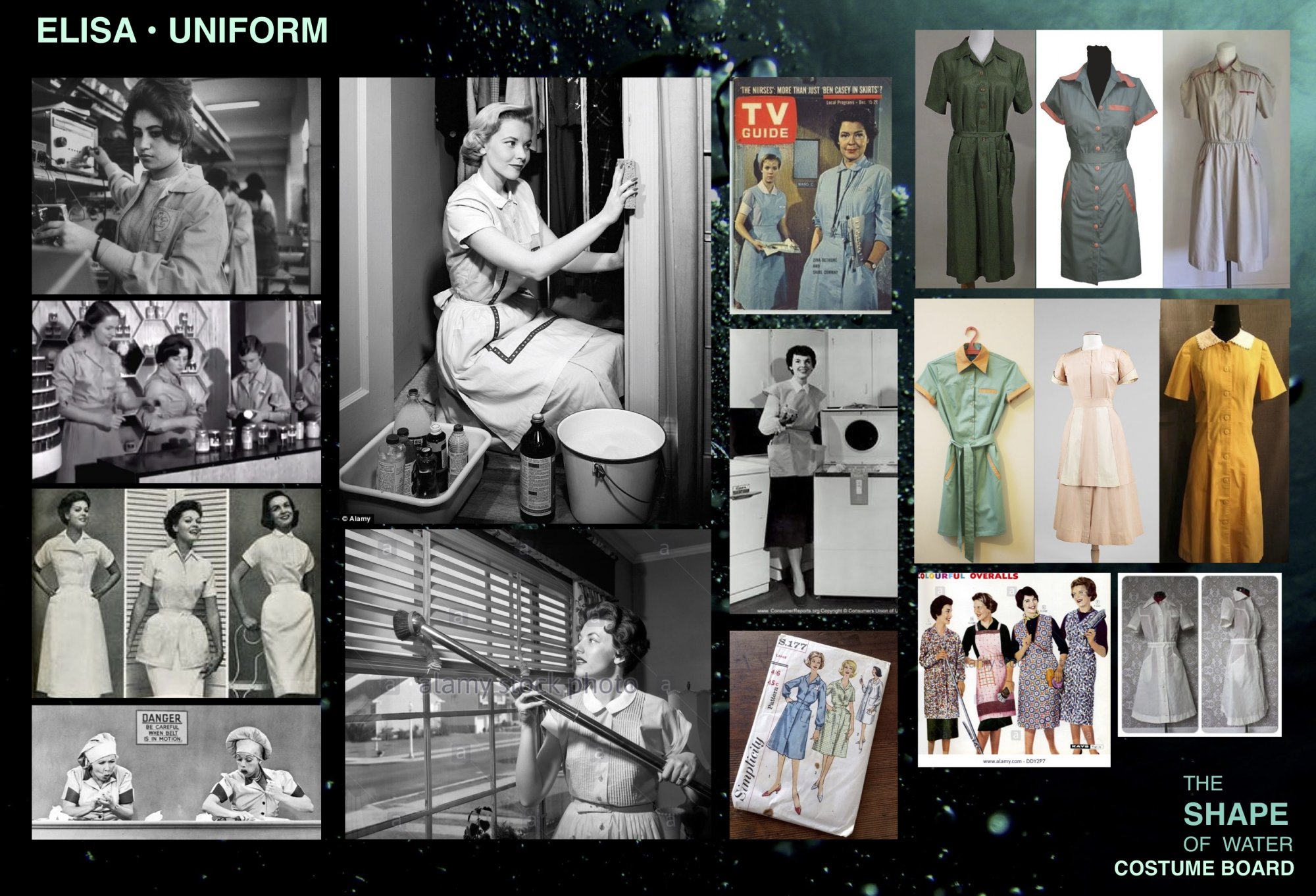
Strickland was impeccably dressed, each character had its own period so to speak. I mean we all wear clothes that are not necessarily “today”, we wear something that it’s 2 or 4 years old, and then you have people in life that stop. You stop at a certain time in your life because you looked the best then and you dress like that. With Giles for instance, his success was mid-50s, he didn’t have any money, he was unemployed, he was a recovering alcoholic and so all the clothes were from that period and actually when we were making the clothes, we made little holes, we did a little mending because that’s what he would do and so for him we had a specific color palette period that was not 1963 but it was like around ’56 or ’57.
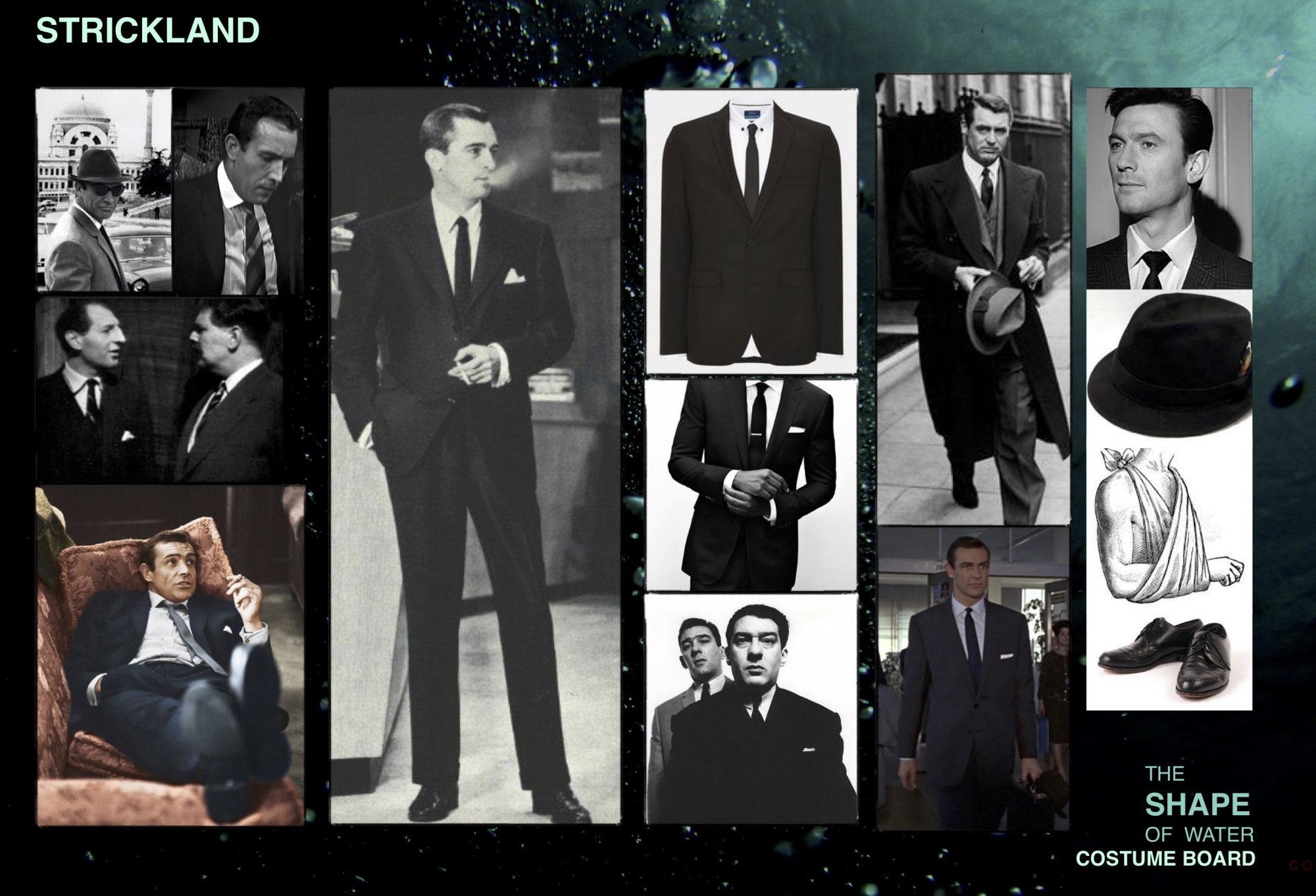
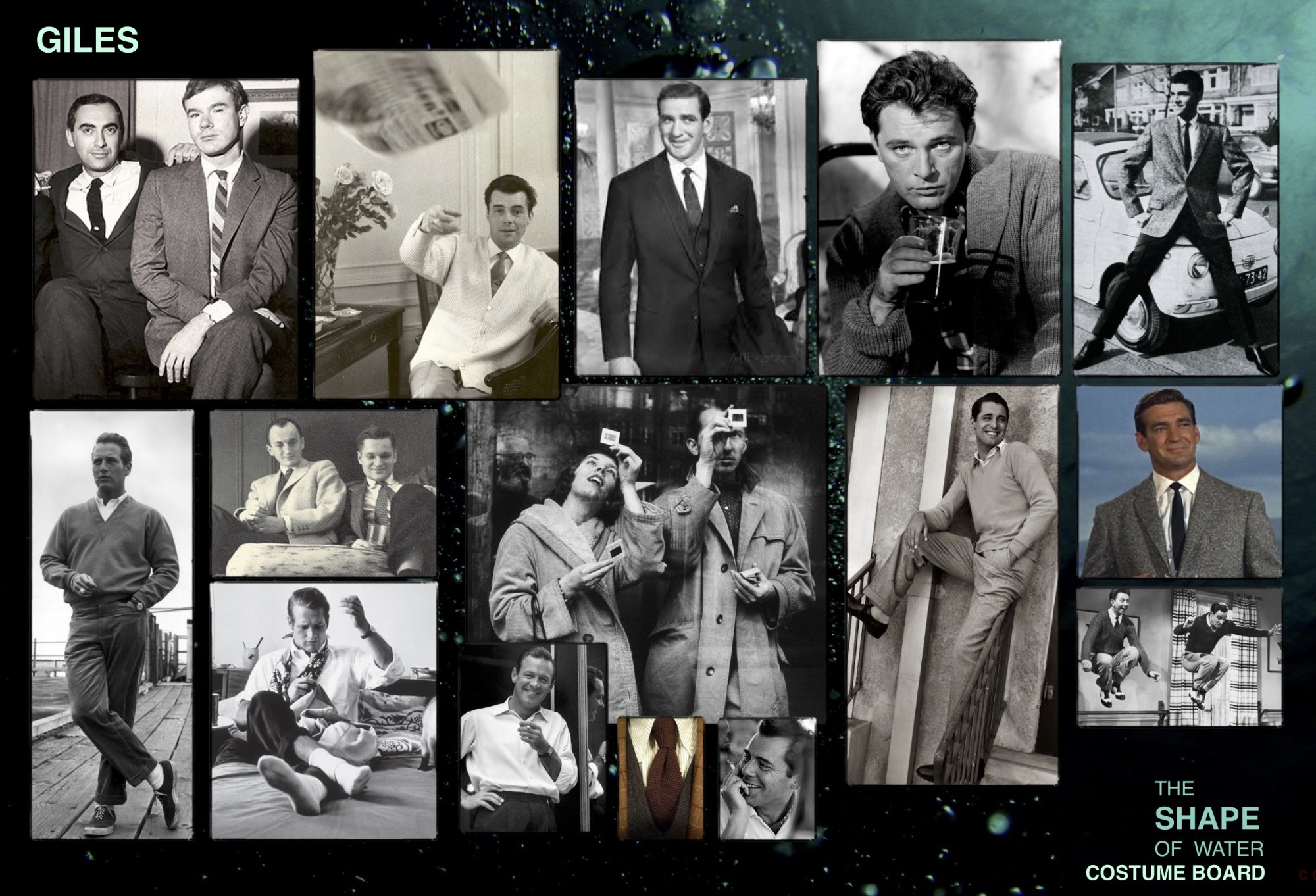
Strickland was the man of “right now”, in fact Guillermo wanted it to be almost into the future, because he represented the future and again with him we had 2 color palettes: when he was at work he was very monochromatic, and when he was at home he had that amber and orange and an all other color palettes which represented the future. So for him, it was all about impeccable tailoring.
___________________
What was, for you, the biggest challenge presented by “The Shape of Water”?
___________________
I think the biggest challenge was the budget since it was tight and we had to be very specific, concise and smart. This is also why we kind of have a bit of a uniform feel for each character because we wanted an iconic look for each one. So I was asking favors from my tailors, from suppliers, because I worked on “The Strain” for 3 years and in that series we spent 1 million every year on clothing and so I said to my friends “this one is a tight one, help us out” and so they were really gracious. I think it’s because we all fell in love with the project and it was “infectious” so I would tell my vendors “this is going to be a beautiful movie if you think of Pan’s Labyrinth or The Devil’s Backbone, this is what it will be”, and so they were really happy to put in their work and give us a break.
The cleaning uniforms are completely painted and you can’t notice, but they are painted, there are greens when you look at it, you are like “wow” and when you see it on the film it looks like kind of an old uniform. But this, I think, is also why Guillermo loved it, everything came together and of those painted uniforms, we had 9 different colors for just the trim and we were like: “out of 9 colors, what is gonna work with this tile and this wall” and so on. So, it really was the best, it was like doing a big movie with no money. In a big movie, you would dye 150m of each color whereas with this one, we had little swatches, and we just decided that’s what we had.
___________________
What made you fall in love with the movie?
___________________
The movie is like “Beauty and the Beast,” it does talk about the people from the fringe, that have no power. It’s a love story, I really loved the fact that the two characters that cannot speak were the people that said the most. And the other characters, although they spoke, they were all very conflicted in their own rise. And yet, the character of Elisa is the smallest little thing, a little toothpick of a woman and she is so strong and gets all these other people to stand up to help her and do something for love. So for me it was a love story and then I think when we started seeing the set come up and when I walked into that apartment – I go to see sets before they are finished, so I just look at shape, colors, and walls – so when I started seeing that coming together I was like “woah.”
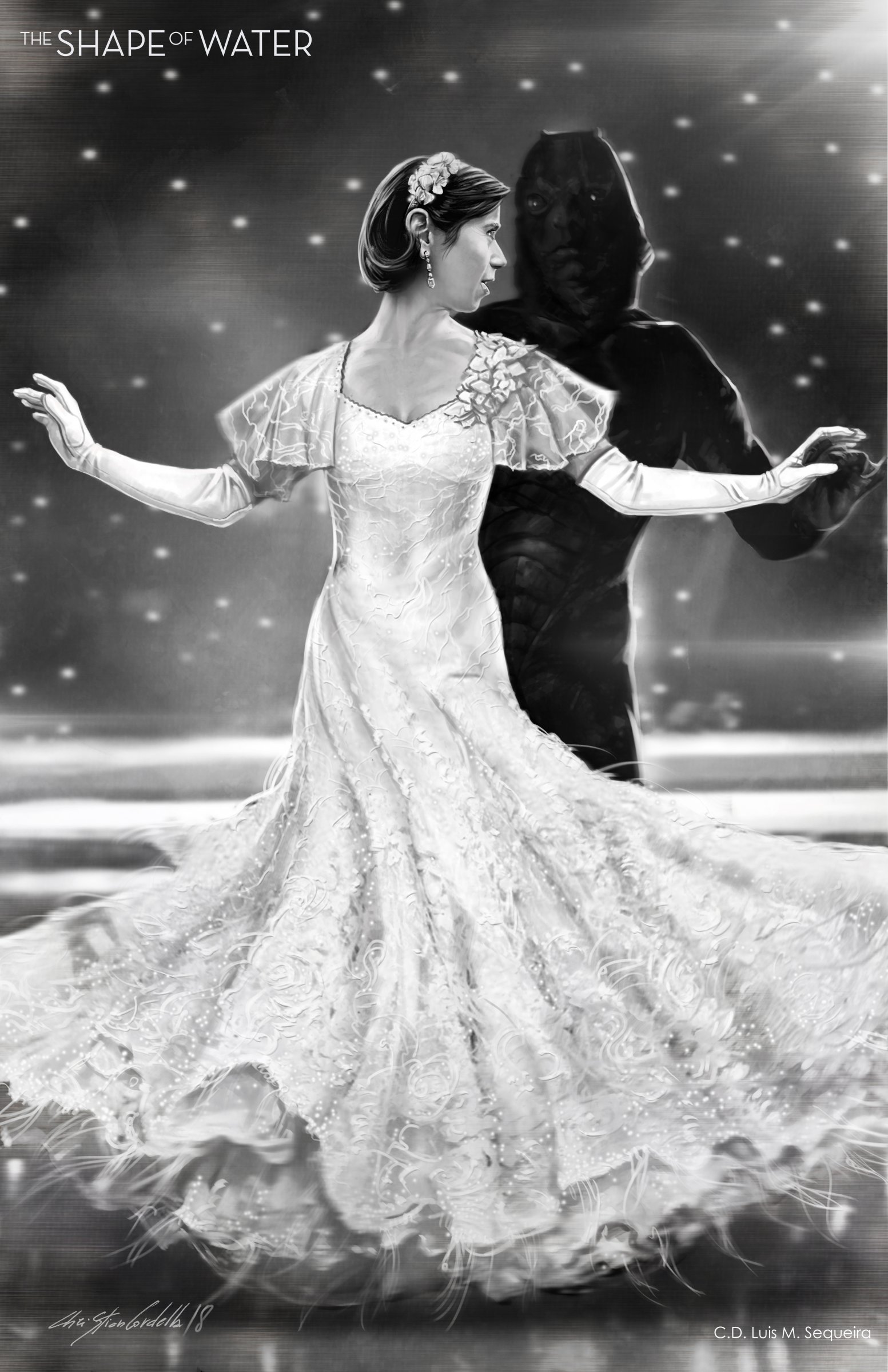
___________________
What about the dance scene?
___________________
The dance scene was great, we shot that in just one morning, and I think we had worked on that dress for 10 weeks because it was like an haute couture dress. It was 10.000$ in fabric alone for that dress. So when you don’t have a lot of money, you have to be smart and really sure of your decisions. But I think that walking into the sets we knew were making something incredibly beautiful, and Dan Laustsen, the DP is amazing, Paul is amazing, and Shane Vieau (set decorator) is incredibly talented. And it just felt like we were all together in this thing.
___________________
And the audience can feel it.
___________________
I think so too. I don’t know if you’ve noticed, but in Guillermo’s movies, he always takes you and brings you into a story, you live that story and then he takes you out. And there is pain, there is love, there is challenge and it’s a journey. With “The Shape of Water” he does it underwater, which I found just so beautiful: you start underwater, then you come out into this story and then you end in the water.
I’ve only seen the movie twice, and it still gives me goosebumps, because I think he is just amazing, and everyone put love into it, actors, crew, and everybody. I was fortunate to go to the screenings, where the members were seeing the movie, and as they come out, we were there to talk to them and, some people were crying, some other were speechless. It was very moving to see how the movie actually impacts people’s emotions.
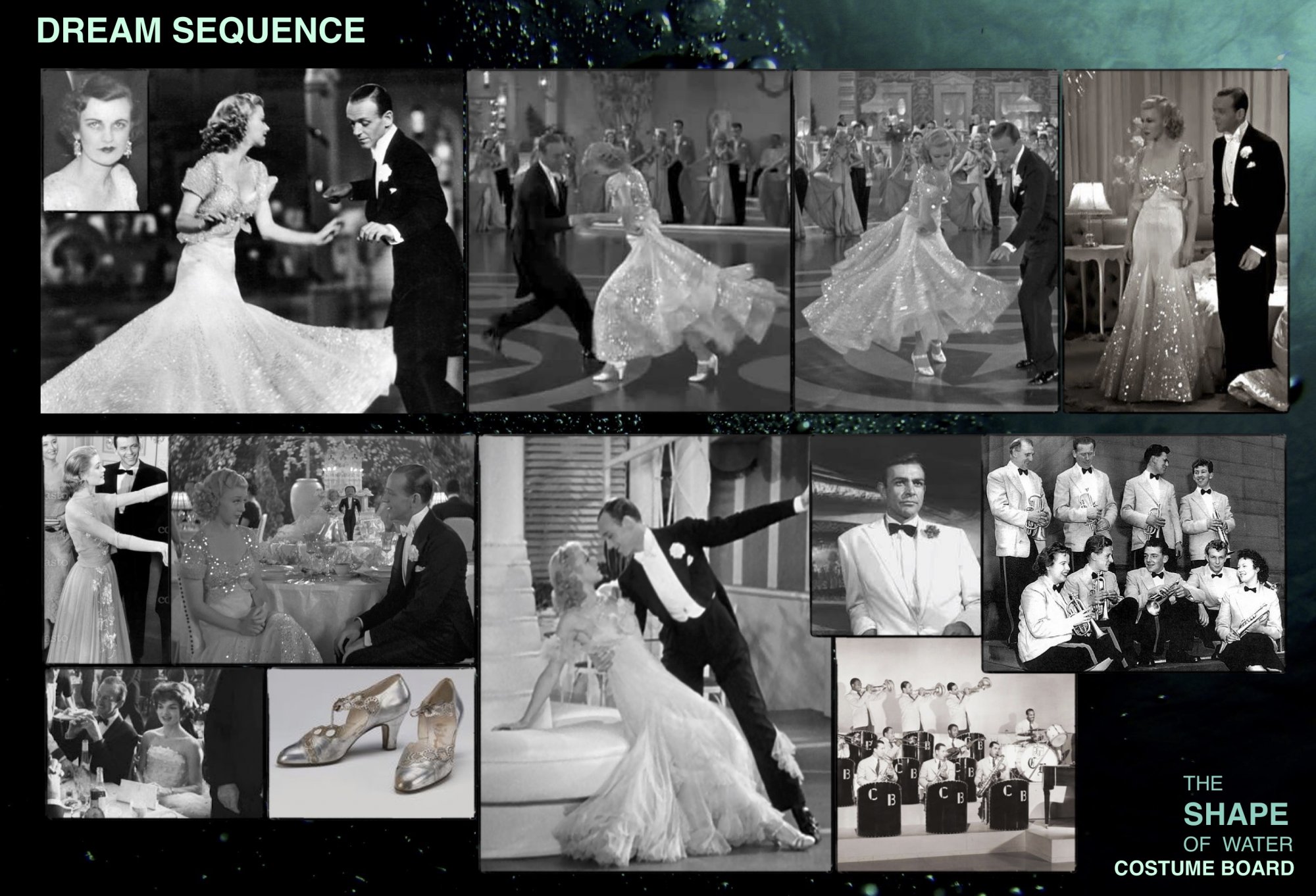
___________________
Your favorite design from the movie?
___________________
I love the black and white dress, for me that was something I was very proud of. I think that with the red band trailer that came out very much later, you actually see the poutine of the movie, the poutine of the character.
I loved to work with the tailor to create these period suits. There was so much that was inspirational for me. It was the first time that I was able to build so much; I’d say that almost everything was built. In “Carrie,” I built Carrie’s clothes, the mother’s clothes, but the rest was all going to the shop and buying clothes. But this was really, from collecting the fabrics – we had 3000 fabric swatches – and we would just put them down on the table and start putting them together and then making the clothing, to refining them and take them to make it look older. We had to do multiples, so for the finale, we had 12 of everything because they are in the rain. So, yes, it was really wonderful.
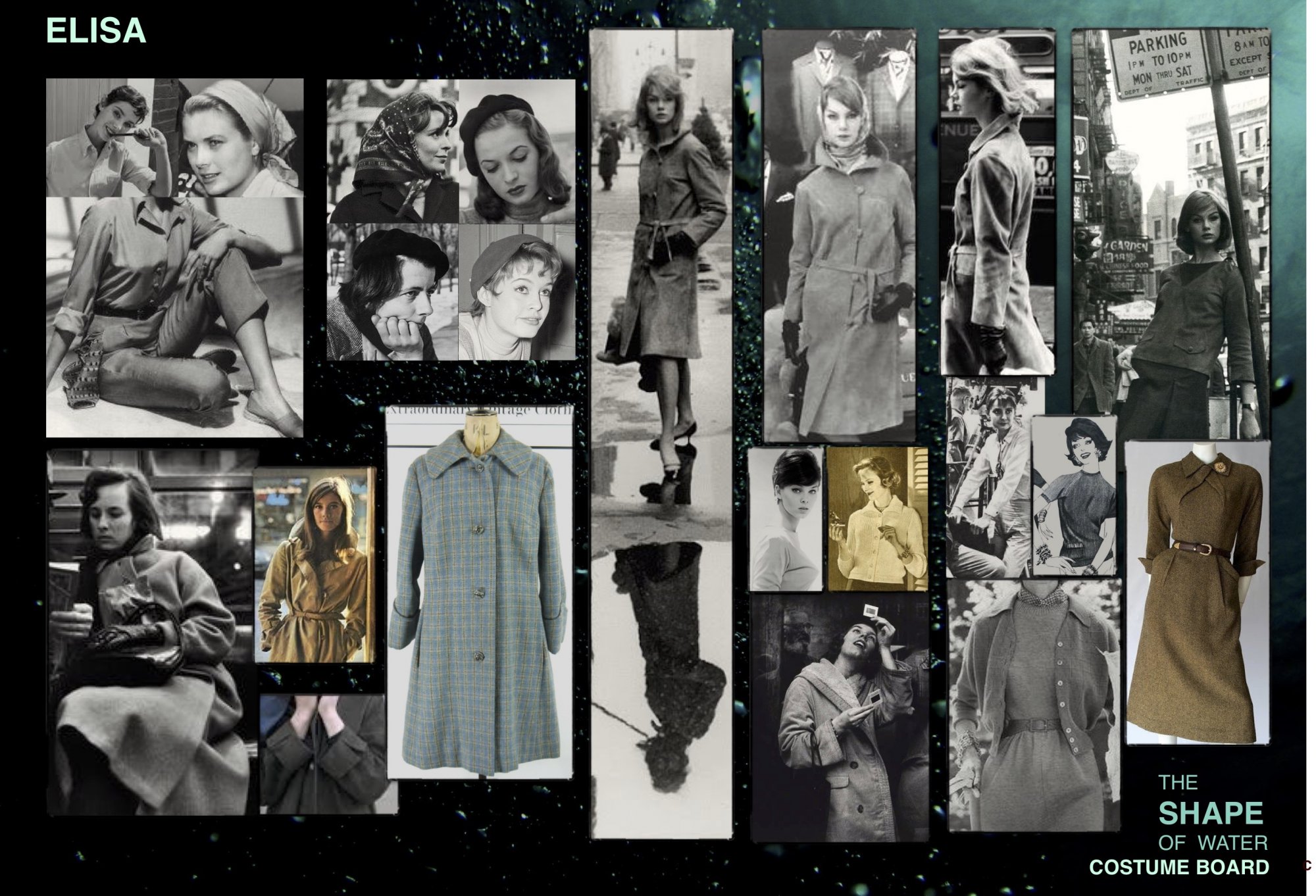
___________________
What’s next for you?
___________________
I’m working on something right now, called “The Christmas Chronicles”, which is a Christmas movie for Netflix, with Kurt Russel playing Santa Claus, which is fun. And I’ve got a couple of projects that I’m looking into, one of them is a very iconic period piece, which I can’t talk about, but it would be a dream job, basically about Hollywood, during its Golden Age, so that would be a lot of fun to do.

___________________
What do you love most about “costume design”?
___________________
So I was in fashion, and I loved it, and I did a line of clothing, and I had a store, but I found that fashion was somewhat shallow, not entirely artistic, it’s really business and commercial. And so, it was very solitary, so you know I worked alone, with a small store, and what I love about film is that it’s collaborative, you come together. The other thing I love about film is that you leave a mark: we look at films now from the 20s or 30s, you don’t know who those people are, but they worked very hard, they have their name there, it’s like leaving your artistic influence on screen, and I think it’s pretty sweet.
I watch “The Sound Of Music” every year, and I hope “The Shape of Water” becomes something like that when people see it all the time.
___________________
When it comes to costume design, what is your favorite Italian movie?
___________________
“La Dolce Vita“. It’s such a classic amazing film.
Credit Images: The Italian Rêve.
Credits Illustrations and Original Moodboard: Luis Sequeira.
Special thanks to The Soho Hotel.

